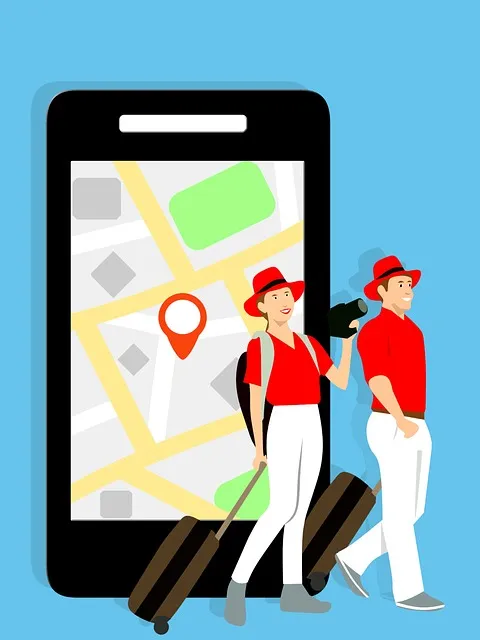In the last couple of years, I have come to appreciate street art. I now go out of my way to see street art and even go on street art walking tours if they are offered. There are so many reasons why people love street art and why it is becoming more popular or important for people from all walks of life. Street art is an important part of history and identity for many metropolises, and sometimes even has the ability to breathe life into communities.
People are starting to accept that the creative and talented people involved are seen as artists, not vandals. And that their work, however ‘urban’, is still worthy of being considered art. People are becoming more open-minded to urban and street art and appreciating where this art form has come from.
Here are the top reasons why Street art is important and why you should love street art.
1. Street art is freedom and diversity
Art is about expression, creativity, freedom, asking and raising questions, protesting, analyzing, and even beautifying. A way to step beyond convention. There’s freedom with putting work in the street. You don’t even need to be considered a ‘legitimate’ artist; don’t need to have thousands of fans, have a huge social media presence, be taken seriously by galleries, or be picked up by an artist agency. all over the world.
Street art is a very diverse form of expression for people from all over the world. There are street artists in nearly every country in the world who are influenced and inspired by a multitude of cultures and styles. This has resulted in a wide and diverse body of urban or street art found all over the world.
You may like to read Bandra by foot
2. Mystery & Intrigue
There are so many questions when you’re a street art lover! Who did it? Why did someone put this work there? What does it mean? Does it even mean anything?
But with the invention of Instagram, it’s now easier than ever to find artists’ official profiles and learn more about their work and why they do what they do. But a lot of street artists prefer to remain anonymous or use aliases for both privacy and legal reasons. There are also still artists who don’t even tag their work so the intrigue and mystery live on.
3. Political or Social Statements
Graffiti and street art have always had a history of being influenced by the present political and social issues. A lot of people have painted on the walls and buildings in their cities as a form of anonymous political protest.
Some political statements are quite controversial; scrawled illegally and boldly in various countries and for various reasons. When people feel they have no power or influence but want to express their anger, hatred or defiance towards political injustice, this kind of art happens. But it is still a peaceful kind of protest.
4. Colourful surroundings = Happier Life
Art in the street makes people happy and can cheer them up. Street art makes their day and their commute more interesting and adds character to what would otherwise just be grey and boring. Art reminds people to feel alive. It’s there to beautify a space. It wakes people up, inspires and motivates them. And sometimes it can make people think.
It may have some broader social commentary, or just be there to bring some chaos to the establishment. Street art takes the ‘normal’ and makes it a thousand times more interesting. Even if you live in poverty, there’s something about bright colors and beautiful art that seems to fill the area with a contagious, buoyant optimism.





 5. Sense of Community
5. Sense of CommunityStreet art is important to keep urban areas and their residents energized and inspired. In some areas, artists and building owners come together to foster the creation of artwork that can be viewed as beautifying and reviving a city, rather than destroying it.
In some cities, independent graffiti murals are designed and implemented by artists with a personal connection to the neighborhood in which they are installed. In many cases, these pieces are created with the permission of the building owner. This relationship can then help develop positive interactions between businesses and members of their community. It is a very cost-effective way both to keep surfaces free from vandalism and to create visual cues to residents that the place they call home is desirable.
Next time you travel somewhere, take some time to explore the street art of that city. You will undoubtedly be led off the normal tourist path, but I am sure you will be surprised by what you find.
The emerging trend of mobile apps in travel and tourism industry – Why Mobile Apps are becoming increasingly popular in the industry?
In the modern world, the rise of mobile apps and social media has transformed every industry and travel industry is no exception!
Mobile apps have certainly evolved the way we used to travel around the world. Today, mobile apps for travel and tourism have become an integral part of the industry, facilitating customers to communicate and navigate in a highly interactive manner. These apps are able to help customers get first-hand reviews about hotels and locations, book their seats at hotels as well as in cases for cars and buses. In fact, with the rise of AI, they are actually serving as virtual tour guides for tourists to better interact with their surroundings (Google new maps is a great example of what we can expect at travelling in future).
Mobile travel apps are certainly handy utility tools for smartphone users. These are great to locate best travel resources as well as organize and plan the entire trip. That’s why it is no surprise as we see the skyrocketing demand and success of mobile apps for the travel industry.
Let’s look at some crazy statistics for travel and tourism industry.
According to Statista, the tourism and travel industry is estimated to generate over $17 billion revenue by 2020. In fact, travel and tourism industries are one of the largest industries in terms of revenue generated globally. The global revenue for travel and tourism accounts to over 7.6 trillion US dollars in 2016. Almost all travellers carry a smartphone and thus mobile apps provided an ideal opportunity for the industry to offer better facilities to customers. Today, the mobile apps have become a staple for travel and tourism industry that offer one-stop solutions for all travellers and tourists.
Here are some interesting facts from mobile apps for tourism and travel industry.
- Around 15% of global users use travel and tourism mobile apps to plan and book a trip ahead.
- Mobile apps for travel and tourism ranks at 7th spot in terms of most number of downloads
- More than 30% of travellers prefer mobile apps to search for flight tickets and hotels
And now, let’s see some benefits of mobile apps for travel and tourism industry.
– Marketing Tools
Digital marketing is a compulsion for all businesses across sizes and trades. Mobile apps provide an ideal platform for businesses to project and market directly to global customers. These apps are helping the industry to stay connected with travellers across the globe and market their services in the most interactive way.
– Travel Bookings

Perhaps the best advantage of mobile apps is their potency to offer easy bookings to travellers. From hotel bookings to rental cars, trains or buses, mobile apps offer an unlimited facility to travellers and tourists to plan and manage the trip ahead of time. Furthermore, the intense competition in mobile apps category also helps travellers to get some great discounts and incentives for their hotel bookings. Many mobile apps also offer users the platform to completely plan and customize their journey and add as many booking as they want including some special trips or sightseeing bookings.
Oh, you can also check out the complete weather update from the mobile apps, this is especially helpful if you are planning for a high-mountain resort with high expectations of rain or extreme weather changes.
– Easy Transactions
You can complete all transactions through online payment mode. Mobile apps offer you one-stop solution to book, pay and manage all transactions from one platform, without having to undergo any paperwork or without bothering to manage tickets or other paper documents.
– Explore the destination
It’s always exciting to see your destination in advance. Mobile apps offer complete real-life pictures of all travel destinations, along with reviews and ratings. This gives an excellent opportunity for travellers to plan and customize their trip in line with reviews and ratings from other customers.
– Discounts and Incentives
There is a strict competition in terms of mobile apps for travel and tourism industry. With thousands of apps battling to dominate the industry, you can expect some crazy and amazing discounts and incentives when booking with mobile apps. The discounts range from hotel bookings to discounts in airfares and even some complimentary services, absolutely free of charge.
Take away:
Tourism and travel industry has become one of the largest industries will trillion dollars annual revenue. However, the success of the industry is heavily influenced by the ever-increasing number of mobile apps, offering better, faster and reliable services to travellers.
You may like to read Mobile Technology is Transforming Tourism Industry – Best Places of Interest
The use of mobile apps for bookings and travel planning is increasing annually and the intense competition in the industry isn’t just beneficial for the industry itself, rather it also offers great benefits and incentives to travellers.
13 reasons you didn’t know about Mother’s Day
- It was all started by a mum, of course. Ann Reeves Jarvis arranged Mothers’ Friendship Day in West Virginia back in the 1860s, and she had a surprisingly serious purpose. A social activist (and mother of 13), Jarvis hoped the special day would quiet the seething animosity between the Union and Confederate soldiers, in addition to their families and neighbours, at the end of the American Civil War.

Image courtesy-Pinterest
2. Her daughter took it very seriously too. After Ann Jarvis died in 1905, her daughter, Anne M. Jarvis, made it her mission to take Mother’s Day national. Anna never had kids, but you could say Mother’s Day was her baby. She campaigned for years against what she saw as its commercialization, from candy to store-bought cards to a 1934 postage stamp. “If the American people are not willing to protect Mother’s Day from the hordes of money schemers that would overwhelm it with their schemes, then we shall cease having a Mother’s Day, she wrote.
3. Tommy loved his mommy. It was President Thomas Woodrow Wilson (Tommy to his family) who made Mother’s Day a national holiday in 1914, 26 years after his mother’s death. “I remember how I clung to her (a laughed-at-mamma’s boy) till I was a great big fellow”, Wilson wrote in a letter to his wife, “but a love of the best womanhood came to me and entered my heart through those apron-strings.”
4. The French once gave medals to their mothers. After their enormous losses in World War I, more than 4 percent of the population was killed- the French were desperate to build the country. So, the government celebrated Mother’s Day in 1920 by presenting a woman who had five children with a bronze medal. Mothers of eight got silver and those with ten- or more! – got the gold.

Image credit- https://girlgonegallic.com

https://www.imagenescool.com
5. In Mexico, it starts with a bang- and a strum and a toot. Dia de las Madres (which is always on 10 May) is one of the biggest holidays south of the US border for restaurants-and for mariachi bands. Because of the high demand, families often hire a band month in advance to perform just for Mum, and children rouse her in the morning with the traditional song ‘Las Mananitas’ as a precursor of the show to come.
6. Expect a crowd at the restaurant. More people eat at restaurants on Mother’s Day than on any other day of the year, with 92 million Americans dining out with Mum. (The second busiest day: Valentine Day)
You may also like Spend your special day with tasty cakes
7. Or you could just call her. Mother’s Day is also the busiest day of the year for phone traffic in countries all around the globe.

8. You can never go wrong with a bouquet of carnations. Americans spent $2.4 billion on flowers on Mother’s Day in 2016 (compared with $792 million on cards). Carnations are the traditional bloom of choice for Mum (even Anna Jarvis sent them). In case you are wondering whether you’re a big enough spender, the average Mother’s Day bouquet goes for $29.
9. She is definitely worth the money. Insure.com’s Mother’s Day Index estimates that it would cost $67,619 a year to hire someone to do all the household tasks that mum does for free cooking and cleaning. That’s about as much as the average accountant or chiropractor makes.
10. This mother deserves a hand (and a nap). India’s Daljinder Kaur was believed to be in her early 70s when she gave birth to a bouncing baby boy on 19 April 2016. Daljinder and her 79-year-old husband, Mohinder Singh Gill, spent decades trying to have a baby- and finally succeeded after saving up enough money for fertility treatments.
11. Becoming a future mum is good for your brain. Pregnancy not only alters a woman’s skin and hair but may also affect her brain. According to a small 2010 study published by the American Psychological Association, the changes include a small but significant increase for grey matter in the parts of the brain responsible for sensory perception, reasoning and judgement. These changes may play a role in shaping maternal behaviour and motivation in the development of higher cognitive function.
12. She’s got the same name in every mother tongue. Babies in nearly every country on the planet speak the word mama in almost the same way.
You may also like to read Tribute to Mom
13. But don’t accuse her of smothering you. Of the mother lode of words will mother as their root, perhaps the most recent is motherhood: the main circuit of a computer. A surprise to some is that smother doesn’t come from the same source- no matter how much you think it’s in your mum’s DNA.
Source- Lauren Cahn and Caroline Fanning –Reader’s Digest May 2018
Beat the heat with these summer coolers
With the average temperature rising across the country and the sun beating down on us, we need to deal with summer bummers. Heat strokes and dehydration are common enough and reaching out for a quick roadside cooler or juice is tempting but can make us vulnerable to stomach bugs and diarrhoea.
However, summer isn’t all that bad. Especially when you think of the joys of the swimming pool and lazy summer afternoons with fresh pickings of seasonal delicacies. From mint to wood apple, stock your kitchen with healthy grocery items and browse through the season! Here are a few ideas for summer coolers that are delicious and healthy.
Wood apple or Bael Fruit

Consume this fibrous fruit for its versatile goodness and great taste, Dr. Suja Issac, a nutritionist and co-founder of Soukya advises. Commonly known as bael in Hindi, it is rich in fibre, calcium and vitamins A and B.
Wood apple can be eaten fresh or sun-dried, or made into marmalade. Its pulp is used to make sherbet, which is excellent for digestion.
The ripe pulp is good for the heart and brain and is also used as a laxative. It is a quick-fix remedy for intestinal worms, so a couple of spoonsful of ripe fruit for kids is a good idea. The raw fruit is used to treat infectious diarrhoea because of its anti-viral activity against certain pathogens.
Tannin in wood apple helps heal gastric and intestinal ulcers. Abundant in antioxidants and flavonoids; its phenolic compounds lend it anti-inflammatory properties. For best results, dilute with water.
Mint

A powerhouse of phytonutrients and antibacterial properties, mint is more than a garnish. According to Dr Isaac Mathal, an alternative medicine expert and the founder of the holistic health centre Soukya, mint leaves can be chewed raw or steeped in tea, inhaling mint extract calms nerves as well as relieves headache-related nausea. Stream inhalation with mint helps decongest the sinuses and respiratory passages. Plus, smoke from dried mint leaves is an effective insecticide.
Often used in palm balms, its menthol content cools and numbs painful areas. Menthol also relieves abdominal cramps. It is good for digestion and acidity as it has a soothing effect on the mucosal linings.
Mint’s anti-inflammatory and anti-bacterial properties make it effective in controlling bad breath- just chew a few mint leaves once or twice a day. When ground to a paste, mint is effective in treating acne and acts as a soothing balm for dry and itchy skin.
Psyllium husk
Commonly known as ispaghula, psyllium husk is a soluble fibre popular for its gentle laxative and bulk-forming properties. It is derived from the seeds of Plantago ovata, a herb that’s native to India.
It is beneficial for a range of digestive issues like constipation, diarrhoea and irritable bowel syndrome. Just add a spoonful to yoghurt or cereal for trouble-free digestion. Its ability to retain water helps soften stool and its bulk-forming property helps ease an upset stomach. It also binds to fat and helps eliminate bile acids from the body. Psyllium husk helps regulate high cholesterol, maintains healthy blood sugar levels and improves triglyceride levels in the body.
Triphala

Triphala, as the Sanskrit name indicates, is an Ayurvedic herbal formula with equal quantities of three fruits- amla (Indian gooseberry), haritaki (Terminalia chebula) and bibhitaki (Terminalia bellerica). Dr. Salia Tewari, a naturopath and yoga expert and founder- chairperson of the Nature Cure and Yog Foundation, Uttaranchal, elaborates.
Available in powder, tablet and juice form, Triphala purifies the system by promoting better bowel movement. It treats constipation- a condition that begets health issues like sluggish liver, skin diseases, depression and diminished energy. Triphala’ s laxative properties are not habit forming.
Gooseberry is vitamin C- rich and supports the natural functions of the liver. Bibhitaki supports the respiratory system, offer relief from asthma and is known to prevent premature greying and hair loss. The third herb, haritaki, is prized for its cleansing properties. It removes toxins and helps maintain a healthy weight. The combined effect of these potent fruit enables smooth functioning of the digestive system and fights colds and allergies by making the immunity system stronger.
Ginger

Ginger is the world’s most commonly consumed condiment. It has at least 14 bioactive compounds like gingerol and shogaol that gives a range of anti-inflammatory and anti-bacterial properties.
Add it to tea or pulverize it into fresh fruit juice or a smoothie-ginger is a stimulating herb that relieves flatulence, strengthens the digestive system and stimulates glandular secretions. Dry ginger is said to be good for chronic bronchitis. It is widely used in Ayurveda to treat digestive complaints, morning sickness, jaundice, piles, colds and coughs, asthma, bronchitis and whooping-cough.
Ginger is well known for its anti-cancerous properties. The root is a potent source of antioxidants. It has calming effect on inflamed joints and muscles. Ginger is packed with B vitamins like B6 and riboflavin apart from magnesium, zinc and phosphorus.
You may also like to read Exotic food treats you can enjoy in summers
Image source– Pixabay
Source– Prevention India– June 2014, July 2014, September 2014 and September 2015 Living Media India Limited.
























